

Gdańsk
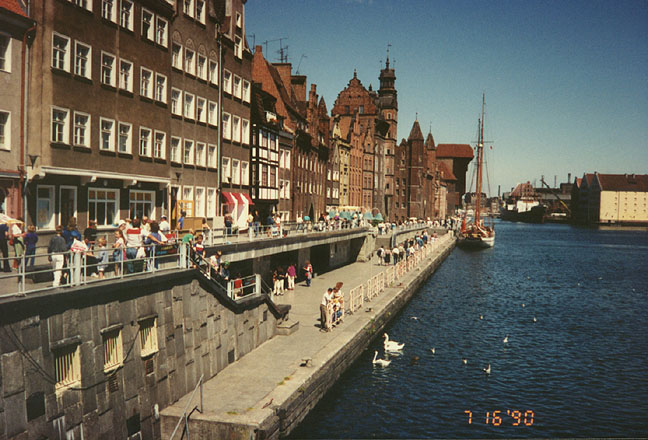
Gdańsk
Gdańsk
(German Danzig), city in northern Poland, the administrative center of Gdańsk Province, a seaport on the Gulf of Gdańsk (formerly Danzig). The city was formerly the administrative center of the free city of Danzig, an area controlled by the League of Nations.
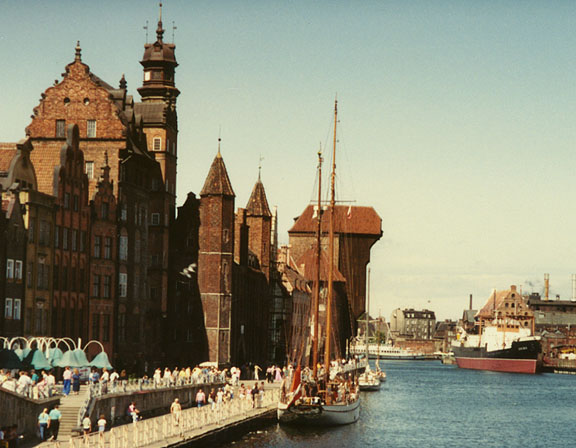
old harbor
The harbor, equipped with extensive facilities for the accommodation of oceangoing vessels, lies in the lee (the side sheltered from the wind) of Hel Peninsula. Two dredged arms of the Wisła (Vistula) River extend through the city, which has numerous bridges.
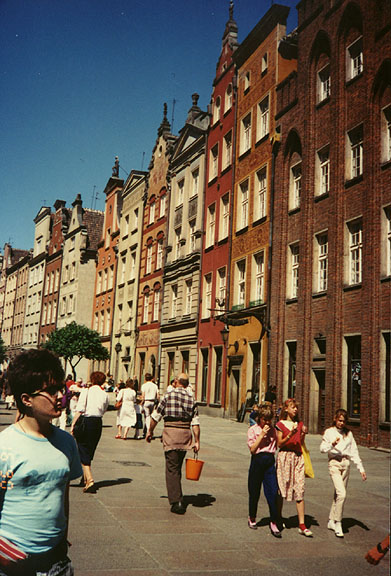
Except for the industrial areas and the Langgarten, the modern section of Gdańsk, the city has a medieval appearance and many narrow, winding streets and gabled houses with open-air balconies of carved stone. Among the noteworthy buildings is the Church of Saint Mary (1343-1505), which contains the celebrated painting The Last Judgment by the Flemish painter Hans Memling. Other notable structures include the town hall, a Gothic-style edifice; the exchange, formerly the merchants guild, built in 1379; and the Church of Saint Catherine.
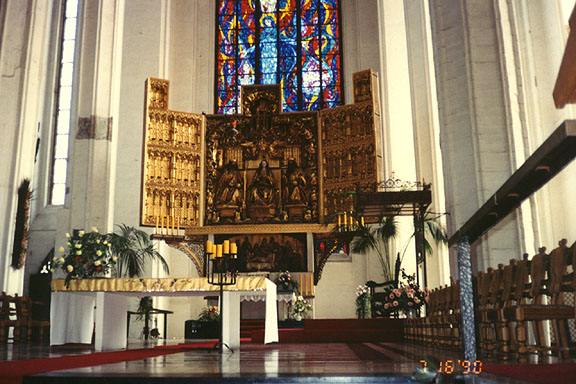
church interior
The Langgarten, which replaced (1895-1896) fortifications removed from the northern and western sides of the city, has spacious public gardens, wide streets, and many examples of modern architecture. Cultural and educational institutions in Gdańsk include Gdańsk Polytechnical University (1945) and the University of Gdańsk (1970); music, art, and trade schools; a municipal library; and a number of theaters.
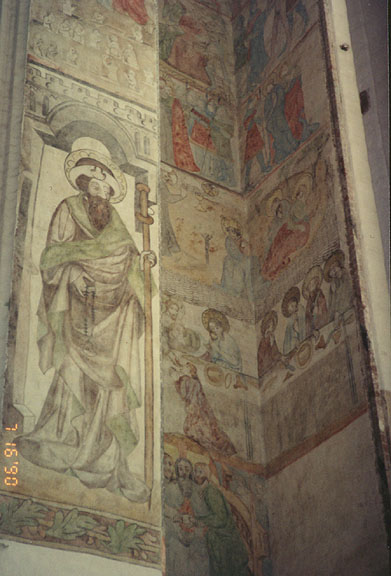
paintings on church walls
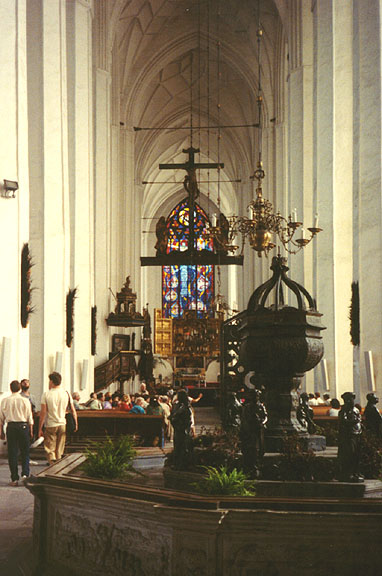
church interior
Commercially, Gdańsk is one of the most important cities in Poland: It has not only port facilities and inland-water connections with the valley of the Wisła but also direct rail connections with Warsaw and other major points in the country and throughout Europe. The port, serviced by foreign and domestic steamship lines, shares with Gdynia the bulk of Polish import trade and handles a considerable portion of the exports. The city ranks among the foremost manufacturing centers of Poland; manufactures include ships, railway cars, furniture, sugar, fertilizer, nuts and bolts, military weapons, bricks, amber products, cigarettes, and numerous other commodities.
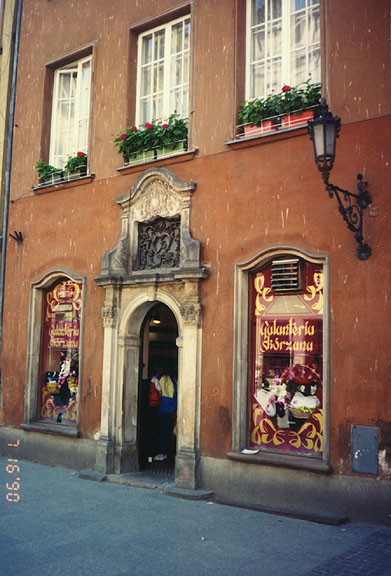
a shop
The historical origins of the city are obscure, but it is known that the town existed as early as 970. During the first three centuries of the recorded history of the town, Gdańsk was successively attacked by the Danes, Swedes, and Pomeranians. The Teutonic Knights conquered it in 1308. In 1358 Gdańsk joined the Hanseatic League, and in the following centuries, particularly the 16th and 17th, it became one of the leading commercial cities of Europe. In the course of the Swedish-Polish wars of the 17th and 18th centuries the city lost its commercial supremacy.
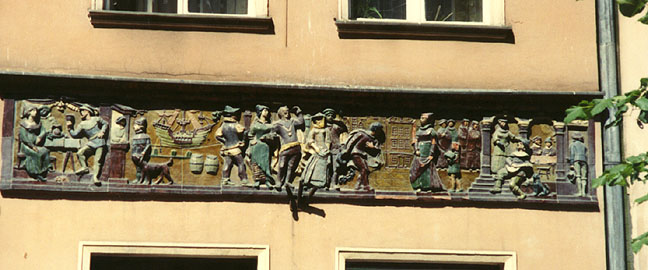
building detail showing importance of the Hansa city
In 1793, with the partition of Poland, the city became a possession of Prussia. In 1807, after Napoleon won a victory over Prussia, it was established as a free city, controlled by the French and the Saxons. It was returned to Prussia in 1815 by the Congress of Vienna.
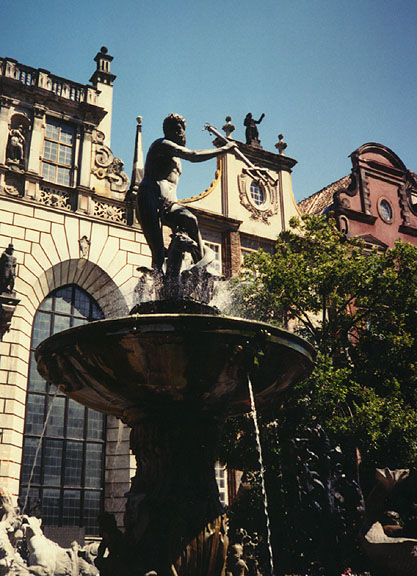
fountain
By the terms of the Treaty of Versailles (1919) following World War I, the city was established as the administrative center of the free city of Danzig, a territory 1953 sq km (754 sq mi) in area, under the control of the League of Nations. In 1939, at the outbreak of World War II, the German government incorporated Danzig into the Third Reich.
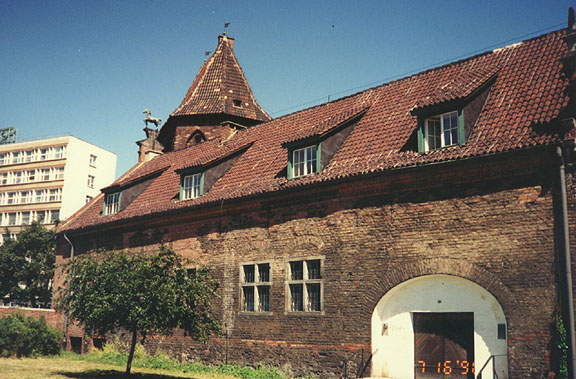
old and the new
The city's infrastructure suffered heavy damage during the war. At the Potsdam Conference in 1945, Danzig was awarded to Poland. Beginning with incidents of labor unrest in 1970, Gdańsk became the country's center for protest against the country's Communist government.
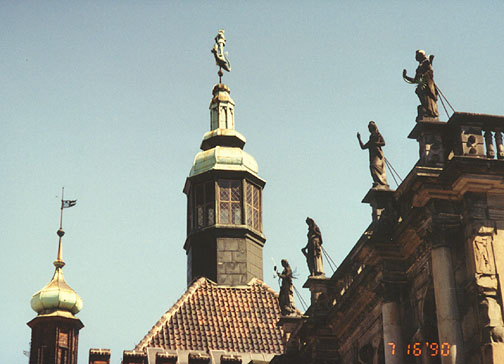
In 1980, further unrest and strikes in the city's shipyards led to the formation of the Solidarity labor federation. This group was instrumental in bringing about free elections in Poland in 1989, and led the coalition government that came to power. Population (1997 estimate) 461,300.
Text from Microsoft Encarta
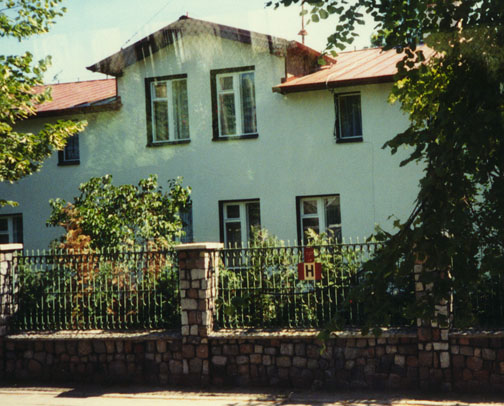
modest residence of Lech Walęsa
Walęsa, Lech (1943- ), Polish labor union activist, Nobel laureate, and president of Poland (1990-1995). Walęsa rose to international fame in August 1980 as the leader of the independent trade union Solidarity, which played a decisive role in bringing down Communism not only in Poland but throughout Eastern and Central Europe.
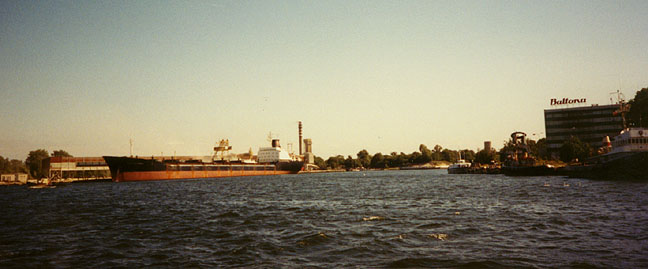
the shipyard where he worked
![]()
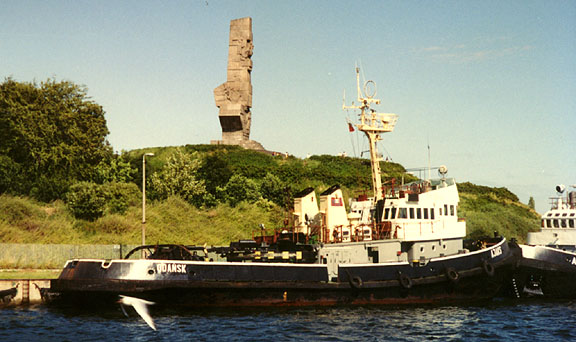
Westerplatte, harbor area where World War II started
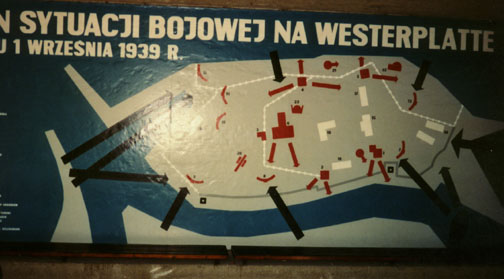
German Naval landing in Poland, September 1939
![]()
![]()